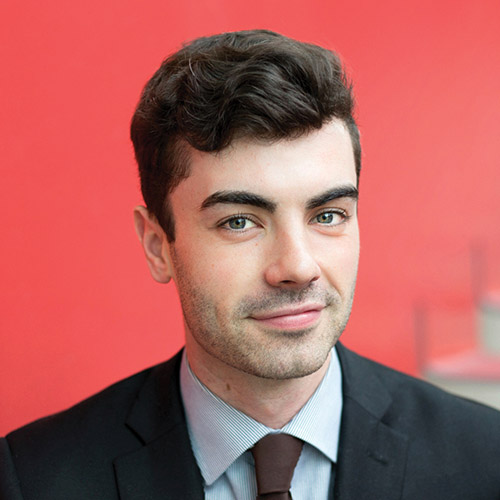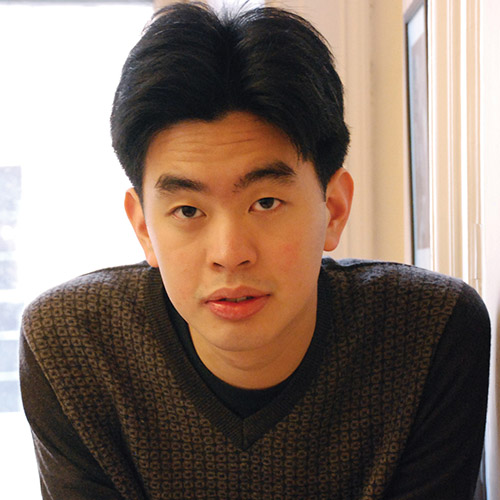Title

Will Healy's visit to the Namibian ghost town of Kolmanskop inspired a composition that will be performed by the Juilliard Orchestra on April 28.
(Photo by Will Healy) More Photos »In this issue of The Journal, we hear from student composers who share their insights into the composition process. Their works and those of Anne Wang will be played at a Juilliard Orchestra concert led by Jeffrey Milarsky.
Body
Will Healy
 Richard Rodgers Scholarship in Composition
Richard Rodgers Scholarship in Composition
Kolmanskop —the culmination of an obsession I’ve had with ghost towns—is named after one of the most surreal and beautiful places in the world. Kolmanskop was a German diamond mining settlement in what’s now Namibia until its abandonment in the 1950s, and the surrounding sands have filled the homes. Last spring I traveled there and spent countless hours sitting in the houses with blank staff paper and a pencil, sketching out a plan for the piece. I tried to depict the idea of decay as the sand fills the houses, the sense of loss and nostalgia as the structures fade away, and the passage of time. I found a violin in one of the houses behind a glass case. It was strange to know that in these eerily silent buildings there had once been music, and I decided to represent that with a recurring offstage violin solo. As the violin plays, it is often hidden by walls of sound, struggling to be heard above the orchestra. (Photo by Dennis Christians)
Andrew Hsu
 Winner of the Arthur Friedman Prize
Winner of the Arthur Friedman Prize
The extramusical impetus for vale is two quatrains from Mont Blanc: Lines Written in the Vale of Chamouni (1816), one of Percy Bysshe Shelley’s most seminal poems. It speaks of the union of man and nature, two fundamentally opposed forces that influence our work as artists. It is this dichotomy of the tangible and intangible that gives art such an overwhelming power over us. This power is beyond logical understanding, yet we still experience it as vividly and faithfully as we would physiologically. Music, then, transforms as we experience it: from a series of organized frequencies to the voice of a universal unconscious. This, therefore, is a work about transformation, transcendence, and redemption. As Shelley’s lyric iambs transverse over Mont Blanc, so the sonorities of vale transverse its own musical mountain in search of nirvana, perhaps, or simply wander through. I had just finished writing vale when I heard about my teacher Steven Stucky’s passing [in February]. This piece (or at least fragments of it) was the last work he saw of mine, and I have dedicated vale to him in memoriam. (Photo by Kenneth Larter)
Will Stackpole
 Pia Gilbert and Alexandre Gretchaninoff scholarships
Pia Gilbert and Alexandre Gretchaninoff scholarships
In college (Stevens Institute of Technology), I was originally a music and technology major. I played guitar and sang in rock bands for a long time and was working to become an audio engineer. Music theory was a requirement and since I was interested in classical music, I decided to double down and take orchestration with the same professor, and I caught the composing bug. My piece Aft Agley came out of my thinking about finding a way to introduce a meta or self-referential element into music without using text. I love when movies break the fourth wall to give a wink and a nod to the audience that can make you say whoa, that was kind of mind-blowing. When I set out to write Aft Agley, I had this idea that it could begin with 90 seconds of this one gigantic harmony. But then I asked myself, why does the music start this way? What does that mean for the other 14 minutes? The rest of the piece is an attempt to answer that question, and the music is essentially about the writing of the piece itself. The title is part of a famous Scottish poem that goes “the best laid plans of mice and men often go wrong” (gang aft agley in Scots). It’s made up of attempts to respond to the opening that “go wrong” and force the music to try again, and it’s a look into what composers and other artists go through in creating a new work. (Photo by Dennis Christians)










